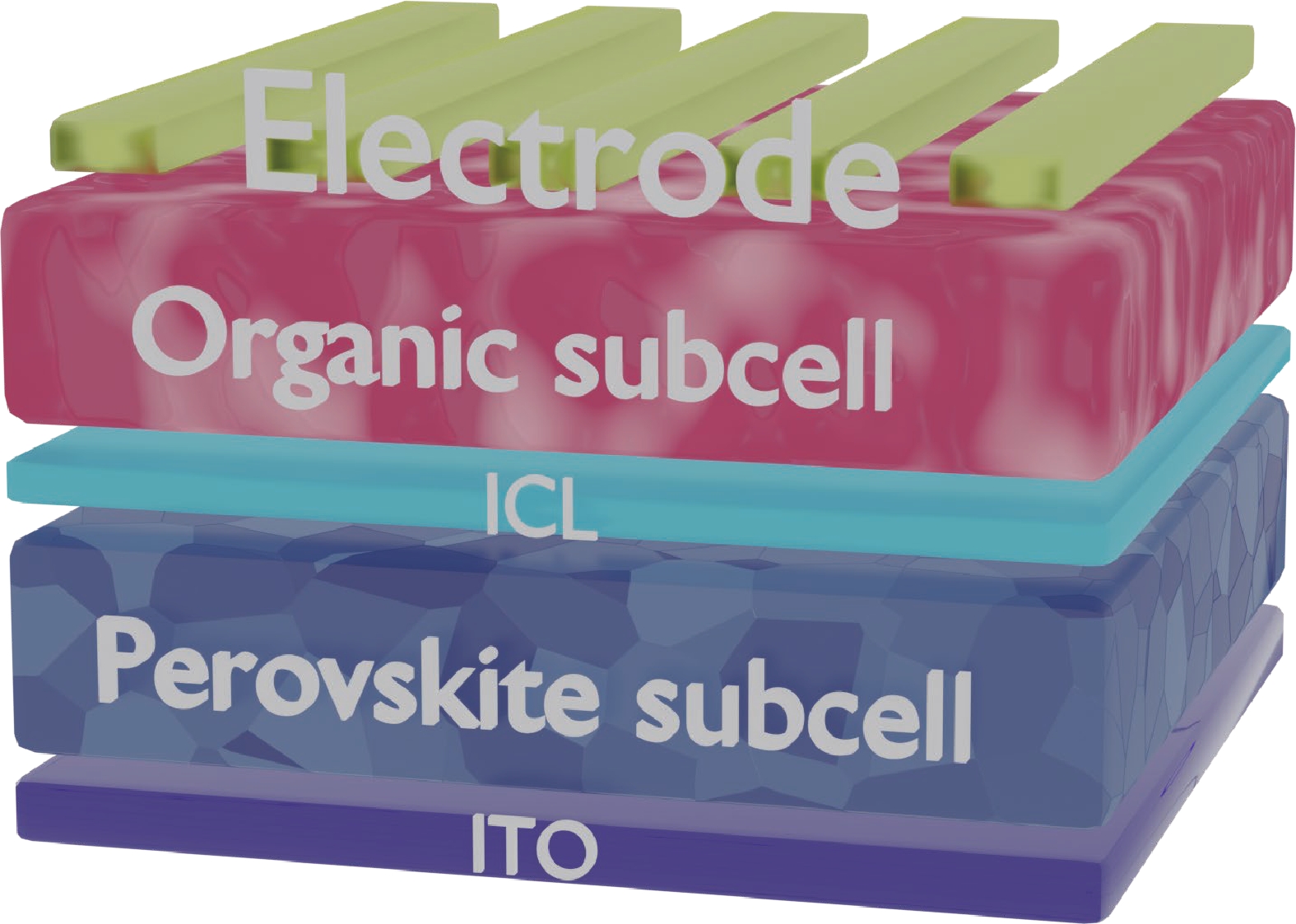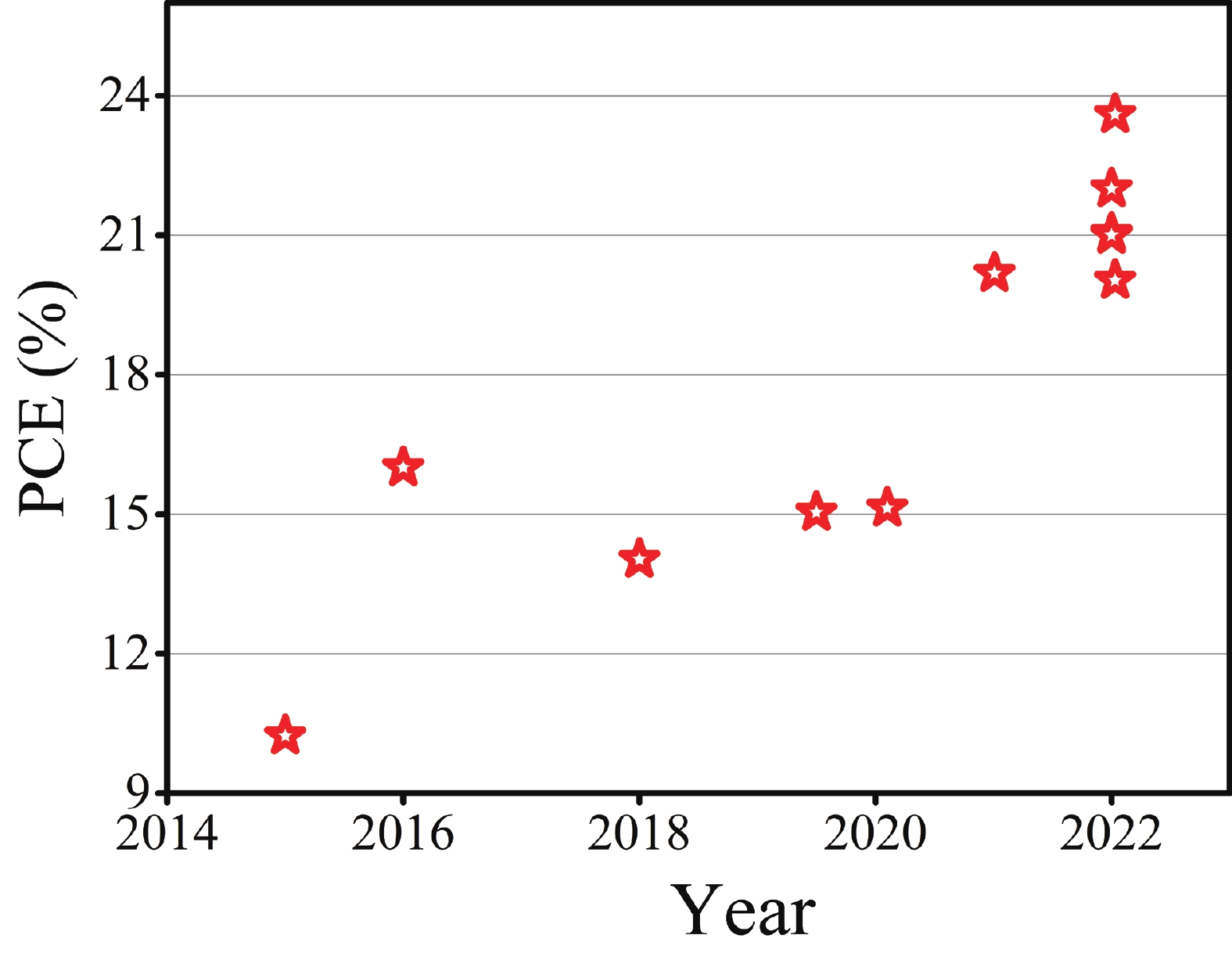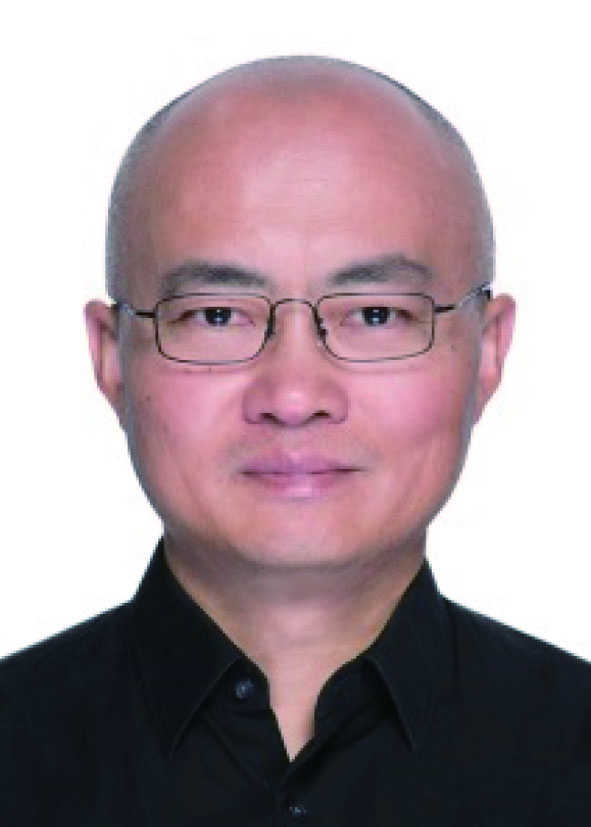| Citation: |
Jie Sun, Liming Ding. Perovskite/organic tandem solar cells[J]. Journal of Semiconductors, 2023, 44(2): 020201. doi: 10.1088/1674-4926/44/2/020201
****
J Sun, L M Ding. Perovskite/organic tandem solar cells[J]. J. Semicond, 2023, 44(2): 020201. doi: 10.1088/1674-4926/44/2/020201
|
-
References
[1] Zhang L X, Pan X Y, Liu L, et al. Star perovskite materials. J Semicond, 2022, 43, 030203 doi: 10.1088/1674-4926/43/3/030203[2] Kim M, Jeong J, Lu H, et al. Conformal quantum dot-SnO2 layers as electron transporters for efficient perovskite solar cells. Science, 2022, 375, 302 doi: 10.1126/science.abh1885[3] Cheng Y H, Ding L M. Perovskite/Si tandem solar cells: Fundamentals, advances, challenges, and novel applications. SusMat, 2021, 1, 324 doi: doi/full/10.1002/sus2.25[4] Chen S, Zuo C T, Xu B M, et al. Monolithic perovskite/silicon tandem solar cells offer an efficiency over 29%. J Semicond, 2021, 42, 120203 doi: 10.1088/1674-4926/42/12/120203[5] Fang Z M, Zeng Q, Zuo C T, et al. Perovskite-based tandem solar cells. Sci Bull, 2021, 66, 621 doi: 10.1016/j.scib.2020.11.006[6] National Renewable Energy Laboratory. Best Research-Cell Efficiencies. 2022[7] Zuo C T, Ding L M. Bulk heterojunctions push the photoresponse of perovskite solar cells to 970 nm. J Mater Chem A, 2015, 3, 9063 doi: 10.1039/C4TA04482G[8] Chen C C, Bae S H, Chang W H, et al. Perovskite/polymer monolithic hybrid tandem solar cells utilizing a low-temperature, full solution process. Mater Horizons, 2015, 2, 203 doi: 10.1039/C4MH00237G[9] Liu Y, Renna L A, Bag M, et al. High efficiency tandem thin-perovskite/polymer solar cells with a graded recombination layer. ACS Appl Mater Interfaces, 2016, 8, 7070 doi: 10.1021/acsami.5b12740[10] Brinkmann K O, Becker T, Zimmermann F, et al. Perovskite-organic tandem solar cells with indium oxide interconnect. Nature, 2022, 604, 280 doi: 10.1038/s41586-022-04455-0[11] Zeng Q, Liu L, Xiao Z, et al. A two-terminal all-inorganic perovskite/organic tandem solar cell. Sci Bull, 2019, 64, 885 doi: 10.1016/j.scib.2019.05.015[12] Xie S, Xia R, Chen Z, et al. Efficient monolithic perovskite/organic tandem solar cells and their efficiency potential. Nano Energy, 2020, 78, 105238 doi: 10.1016/j.nanoen.2020.105238[13] Liu L, Xiao Z, Zuo C, et al. Inorganic perovskite/organic tandem solar cells with efficiency over 20%. J Semicond, 2021, 42, 020501 doi: 10.1088/1674-4926/42/2/020501[14] Chen W, Li D, Chen X, et al. Surface reconstruction for stable monolithic all-inorganic perovskite/organic tandem solar cells with over 21% efficiency. Adv Funct Mater, 2022, 32, 2109321 doi: 10.1002/adfm.202109321[15] Wang P, Li W, Sandberg O J, et al. Tuning of the interconnecting layer for monolithic perovskite/organic tandem solar cells with record efficiency exceeding 21%. Nano Lett, 2021, 21, 7845 doi: 10.1021/acs.nanolett.1c02897[16] Chen X, Jia Z Y, Chen Z, et al. Efficient and reproducible monolithic perovskite/organic tandem solar cells with low-loss interconnecting layers. Joule, 2020, 4, 1594 doi: 10.1016/j.joule.2020.06.006[17] Xie Y M, Niu T, Yao Q, et al. Understanding the role of interconnecting layer on determining monolithic perovskite/organic tandem device carrier recombination properties. J Energy Chem, 2022, 71, 12 doi: 10.1016/j.jechem.2022.03.019[18] Qin S, Lu C, Jia Z, et al. Constructing monolithic perovskite/organic tandem solar cell with efficiency of 22.0% via reduced open-circuit voltage loss and broadened absorption spectra. Adv Mater, 2022, 34, 2108829 doi: 10.1002/adma.202108829[19] Chen W, Zhu Y, Xiu J, et al. Monolithic perovskite/organic tandem solar cells with 23.6% efficiency enabled by reduced voltage losses and optimized interconnecting layer. Nat Energy, 2022, 7, 229 doi: 10.1038/s41560-021-00966-8[20] Li Z, Wu S F, Zhang J, et al. Hybrid perovskite-organic flexible tandem solar cell enabling highly efficient electrocatalysis overall water splitting. Adv Energy Mater, 2020, 10, 2000361 doi: 10.1002/aenm.202000361[21] Xie Y M, Yao Q, Zeng Z, et al. Homogeneous grain boundary passivation in wide-bandgap perovskite films enables fabrication of monolithic perovskite/organic tandem solar cells with over 21% efficiency. Adv Funct Mater, 2022, 32, 2112126 doi: 10.1002/adfm.202112126 -
Proportional views






 DownLoad:
DownLoad:











 Jie Sun:got her BS from Minzu University of China in 2021. Now she is a PhD student at University of Chinese Academy of Sciences under the supervision of Prof. Liming Ding. Her research focuses on perovskite devices
Jie Sun:got her BS from Minzu University of China in 2021. Now she is a PhD student at University of Chinese Academy of Sciences under the supervision of Prof. Liming Ding. Her research focuses on perovskite devices Liming Ding:got his PhD from University of Science and Technology of China (was a joint student at Changchun Institute of Applied Chemistry, CAS). He started his research on OSCs and PLEDs in Olle Inganäs Lab in 1998. Later on, he worked at National Center for Polymer Research, Wright-Patterson Air Force Base and Argonne National Lab (USA). He joined Konarka as a Senior Scientist in 2008. In 2010, he joined National Center for Nanoscience and Technology as a full professor. His research focuses on innovative materials and devices. He is RSC Fellow, and the Associate Editor for Journal of Semiconductors
Liming Ding:got his PhD from University of Science and Technology of China (was a joint student at Changchun Institute of Applied Chemistry, CAS). He started his research on OSCs and PLEDs in Olle Inganäs Lab in 1998. Later on, he worked at National Center for Polymer Research, Wright-Patterson Air Force Base and Argonne National Lab (USA). He joined Konarka as a Senior Scientist in 2008. In 2010, he joined National Center for Nanoscience and Technology as a full professor. His research focuses on innovative materials and devices. He is RSC Fellow, and the Associate Editor for Journal of Semiconductors



